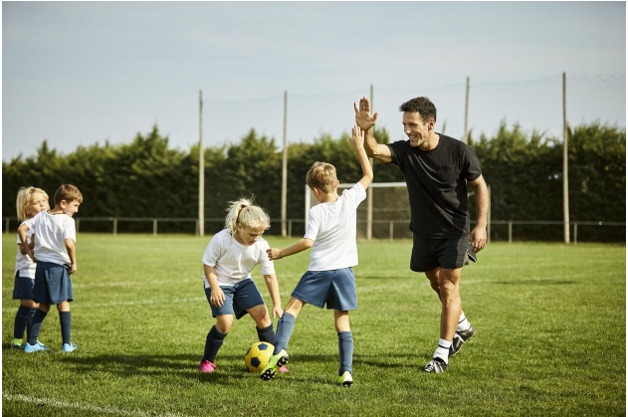Ask most people what they see when a soccer ball rolls by and you’ll hear the same thing—round, white, bit of a bounce. But to a seasoned coach who’s seen more training sessions than rainy Saturdays, it’s so much more.
Soccer balls are a tool, teacher, and mirror of your team’s progress. If you’re only using one kind, well, you’re only playing with half the deck. Stocking different ball types gives your players what they need to grow, adjust, and thrive. So, as grassroots coaches, why should you stock different ball types?
Match Balls vs. Training Balls: Not All Spheres Are Equal
It’s easy to assume a ball’s a ball, right? If it rolls straight and doesn’t deflate, job done. But the thing is, match balls and training balls are designed for totally different roles on the pitch.
Match balls are engineered to near perfection, with their thermally bonded panels, minimal water uptake, and flight consistency, among others. They’re built light and precise, so what you strike in the 10th minute will behave the same in the 90th.
Training balls are different. They’re usually stitched, a bit heavier, and tougher all around. These balls are made to cop a flogging, session after session. Their weight builds strength in young legs, and their durability means they’ll survive drills that chew up lesser gear.
If you’re using a match ball for every drill, you’re burning out your good gear and missing out on what a properly weighted training ball can teach. And if you’re running training with worn-down match balls, you’re not giving your squad the real feel they’ll face on game day.
Ball Size Matters, and It’s Not Just About Age
Yeah, we’ve all seen the size chart:
- Size 3 for the little tackers
- Size 4 for the in-betweeners
- Size 5 for everyone else
But more than just an age issue, picking the size of the ball is a training strategy. Smaller balls—especially size 1s and 3s—can tighten up a player’s first touch like nothing else. Use a mini ball during close-control drills, and you’ll watch even senior players sharpen up. It’s like resistance training for your footwork.
Younger squads transitioning from size 4 to 5? Don’t rush it. Training with a mix during the changeover period makes the step up smoother and less awkward. Older players can benefit from dropping back to smaller sizes in technical sessions too. It forces focus, improves balance, and trains the eyes and feet to stay sharp under pressure.
Instead of following the size rules like gospel, treat them as guidelines. Later on, tweak them based on where your team is at development-wise.
Conditions Change (Your Ball Should Too)
Imagine you’re halfway through a midweek session, the pitch is slick with rain, and you’re running first-touch drills using your usual game-day ball. Next thing you know, the bounce is off, players are slipping into tackles, and everyone’s frustrated. Sounds familiar?
The truth is that balls react differently depending on conditions. On damp grass, a smooth-surfaced ball might turn into a bar of soap. On dry artificial turf, a grippy textured ball might behave unpredictably.
Coaches who plan ahead keep a few extras on hand with slight variations in grip, texture, and bladder pressure. These little tweaks can save a session and make it more realistic to what players face come game day.
Specialty Balls You Probably Haven’t Considered
If your entire ball stash is made up of regulation size 5s, you’re missing out on some handy tools. Here’s a few that deserve a look-in:
- Weighted balls – Using them in passing or striking drills strengthens your touch and encourages precision. They’re brilliant for building muscle memory.
- Low-bounce futsal balls – Perfect for indoor sessions or sharpening close control. They’re heavier and don’t spring away like a regular ball, which forces better technique.
- Mini balls (Size 1 or 2) – Great for juggling challenges, warm-up games, or solo skills training. Plus, they’re just plain fun to have around.
- Promotional or replica balls – Ideal for light drills, open days, or low-intensity sessions where you don’t want to burn through your top gear.
Psychology of the Ball: Players Notice More Than You Think
There’s more to a ball than how it rolls. There’s how it feels—how it responds to the boot, how it arcs through the air, how it behaves under pressure. And yes, players notice.
Imagine giving your team a brand-new, top-of-the-line match ball for the first time, five minutes before kick-off. It might look slick, but if they haven’t trained with it, the unfamiliar bounce or flight path can throw them off.
On the flip side, rotating ball types during training can actually build player adaptability. They learn to adjust to different weights, textures, and responses, which makes them more composed when the conditions aren’t ideal.
Budget Smart, Not Cheap: Invest in What Matters
Stocking different ball types doesn’t mean you need to drop a fortune. It’s about being strategic with what you’ve got.
- Prioritise durability – Good training balls might cost a bit more upfront, but they’ll take a pounding week in, week out.
- Mix your match balls – Keep a couple top-notch ones for match day, and use others for warm-ups or ball circulation.
- Rotate to extend lifespan – Don’t let one ball cop it all. Spread the workload and your gear will go the distance.
At the end of the day, footy’s a simple game, but the gear behind the scenes makes a world of difference. Stocking a variety of balls tells your players you’ve thought about the details, that you’re serious about helping them grow.
Whether it’s giving the under-12s a better grip on their first touch, or helping your senior squad adjust to dodgy weather conditions without missing a beat, the right ball can make the difference between good and great.
